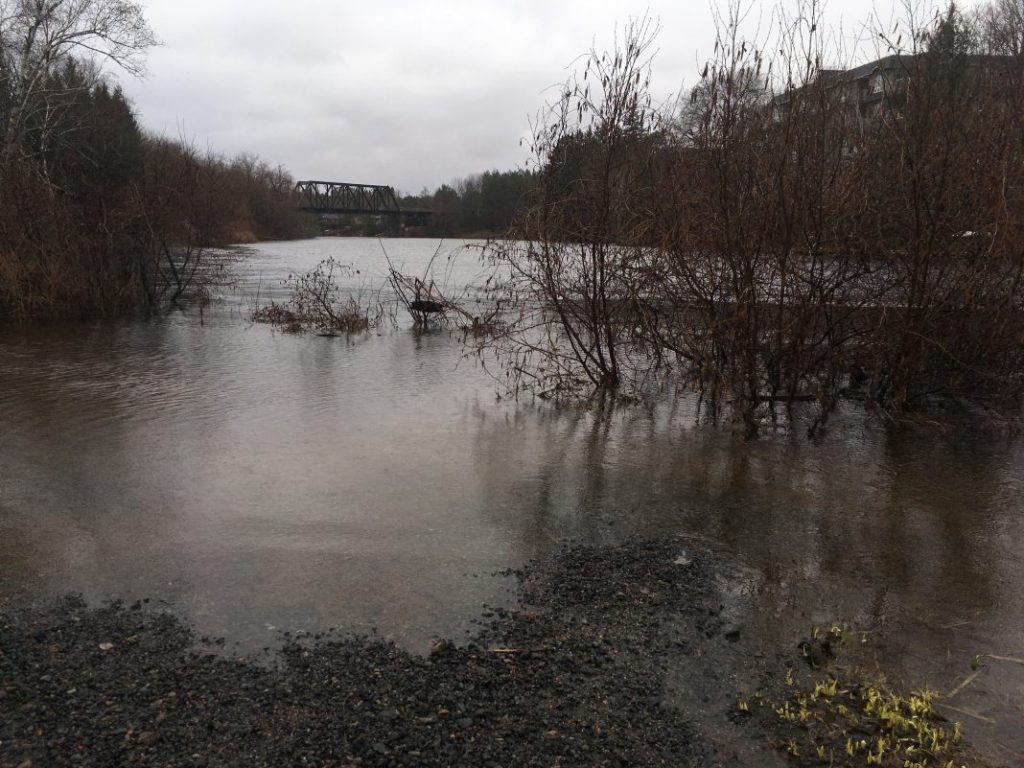Stakeholders are anxiously awaiting answers about the future of Muskoka watershed management as the Ministry of the Environment, Conservation and Parks (MECP) continues to review the recommendations made by the Muskoka Watershed Advisory Group.
The Muskoka River Watershed encompasses more than 5,100 square kilometres, containing 15 sub-watersheds and over 2,000 lakes. To help identify issues and risk within the watershed, the Ontario government announced the creation of the Muskoka Watershed Conservation and Management Initiative in August 2018 alongside $5 million in funding for the project. The nine-member advisory group, which was announced a year later in 2019, was created to provide advice and recommendations regarding the initiative. The group delivered their report to the ministry in June, detailing 19 recommended projects that fall into three categories: integrated watershed management, flood mitigation to address spring flood risk and specific projects for enhanced watershed health. The report was released to the public in October.
“The Ministry is currently reviewing the Advisory Group’s report and recommendations and considering next steps,” said MECP spokesperson Gary Wheeler. “We will share further details about the Muskoka Watershed Conservation and Management Initiative in the near future.”
Mardi Witzel, chair of the advisory group, said the report includes an emphasis on creating an integrated watershed management approach because the current system has different organizations and levels of government playing disconnected roles.
“We think that not only to mitigate problems but also to capitalize on opportunities that it makes sense for there to be a coordinated approach to how plans are built and then projects are implemented across the watershed,” she said. “It’s really to try to avoid this fragmented approach to decision making and to consider the effects of any one project on other areas of the watershed.”
The group has recommended the creation of a community round table and several task forces as part of the integrated approach, which aims to improve planning outcomes environmentally and economically while also reflecting the interconnectedness of natural features in the watershed. Witzel said it’s important because “the reality is that nature doesn’t observe municipal boundaries.”
Along with consolidating oversight of the watershed, the report also underlines the need to coordinate the collection of data. Witzel said that while a great deal of data exists, it resides in different locations, so the advisory group recommends the creation of task forces to collect data, fill any gaps, and use the information for modeling exercises and to improve future decision making. The first stage of any integrated watershed management activity is typically watershed characterization, she said, which uses assessments to create a picture of the water, land and habitat throughout a watershed.
“Today that’s not happening in Muskoka,” Witzel said. “We’re not a region that has a conservation authority, and I’m not suggesting that’s what we need, but the one thing that conservation authorities do is they look at the watershed on a watershed basis, whereas today these plans are being driven perhaps municipally, perhaps by the province, but not on a watershed scale.”
The advisory group identified flood mitigation as the most pressing need in the report, highlighting the environmental, social and economic costs of flooding, but they also emphasized their goal to take a “broader, more comprehensive” look at watershed management. They were concerned about being seen as a flooding task force given the fact that their group was announced just months after the historic flooding in the spring of 2019.
“We recognize the intensity of concern around flooding, but our mandate was broader than that and so we were really very pleased to see how many different issues the different organizations brought forward,” Witzel said. “I think it’s fair to say that people recognize that water quality is just as important an issue as water quantity concerns. We’re fortunate that we have, for the most part, excellent water quality in Muskoka, but we do have some areas of concern, some emerging threats.”
The advisory group sees implementation of the recommendations as two parallel tracks, Witzel said: the ongoing creation of an integrated watershed management approach and the completion of specific projects detailed in recommendations eight through 19. However, determining next steps is out of their control.
Along with the initial $5 million investment, the Ontario government offered to match up to $5 million in additional funding for the initiative. Witzel said it’s difficult to identify potential sources for the matching funds until they know which projects the province will approve, so she and the other members of the advisory group are eager to hear what’s next.
“It’s now entirely in the hands of the minister, and we’re anxious to see what the minister and the ministry will do with this report,” Witzel said. “We’re very hopeful that a number of these recommendations will be green lighted. Where we go from here as an advisory group is also at the discretion of the minister.”
To read the report, click here. Watch the video below to hear Parry Sound-Muskoka MPP Norm Miller acknowledge the Muskoka Watershed Advisory Group in the Ontario legislature.
